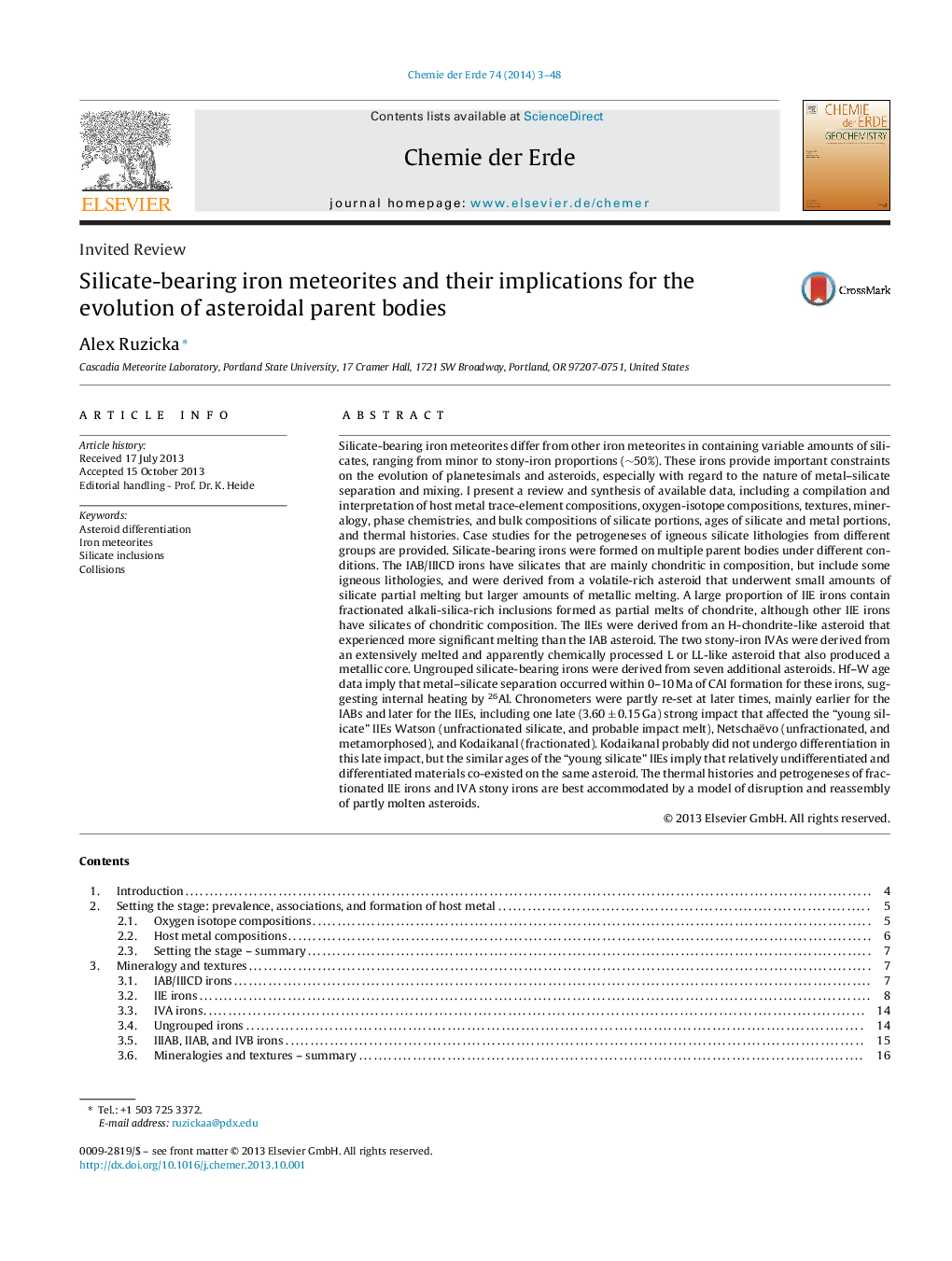| کد مقاله | کد نشریه | سال انتشار | مقاله انگلیسی | نسخه تمام متن |
|---|---|---|---|---|
| 4406913 | 1307331 | 2014 | 46 صفحه PDF | دانلود رایگان |
Silicate-bearing iron meteorites differ from other iron meteorites in containing variable amounts of silicates, ranging from minor to stony-iron proportions (∼50%). These irons provide important constraints on the evolution of planetesimals and asteroids, especially with regard to the nature of metal–silicate separation and mixing. I present a review and synthesis of available data, including a compilation and interpretation of host metal trace-element compositions, oxygen-isotope compositions, textures, mineralogy, phase chemistries, and bulk compositions of silicate portions, ages of silicate and metal portions, and thermal histories. Case studies for the petrogeneses of igneous silicate lithologies from different groups are provided. Silicate-bearing irons were formed on multiple parent bodies under different conditions. The IAB/IIICD irons have silicates that are mainly chondritic in composition, but include some igneous lithologies, and were derived from a volatile-rich asteroid that underwent small amounts of silicate partial melting but larger amounts of metallic melting. A large proportion of IIE irons contain fractionated alkali-silica-rich inclusions formed as partial melts of chondrite, although other IIE irons have silicates of chondritic composition. The IIEs were derived from an H-chondrite-like asteroid that experienced more significant melting than the IAB asteroid. The two stony-iron IVAs were derived from an extensively melted and apparently chemically processed L or LL-like asteroid that also produced a metallic core. Ungrouped silicate-bearing irons were derived from seven additional asteroids. Hf–W age data imply that metal–silicate separation occurred within 0–10 Ma of CAI formation for these irons, suggesting internal heating by 26Al. Chronometers were partly re-set at later times, mainly earlier for the IABs and later for the IIEs, including one late (3.60 ± 0.15 Ga) strong impact that affected the “young silicate” IIEs Watson (unfractionated silicate, and probable impact melt), Netschaëvo (unfractionated, and metamorphosed), and Kodaikanal (fractionated). Kodaikanal probably did not undergo differentiation in this late impact, but the similar ages of the “young silicate” IIEs imply that relatively undifferentiated and differentiated materials co-existed on the same asteroid. The thermal histories and petrogeneses of fractionated IIE irons and IVA stony irons are best accommodated by a model of disruption and reassembly of partly molten asteroids.
Journal: Chemie der Erde - Geochemistry - Volume 74, Issue 1, March 2014, Pages 3–48
